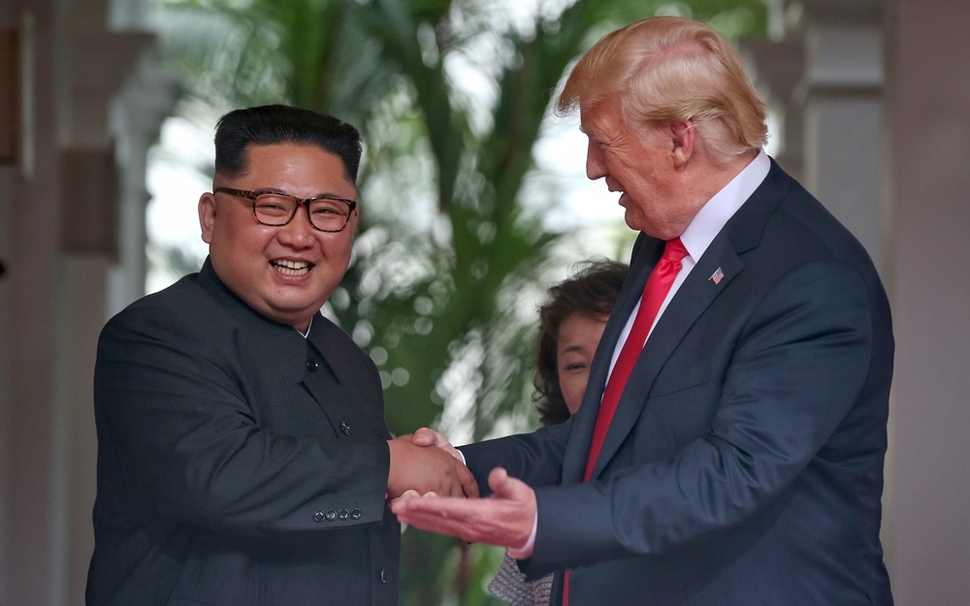 |
|
US President Donald Trump (right) greets North Korean leader Kim Jong-un at the Capella hotel on Singapore’s Sentosa island before the first-ever North Korea-US summit on June 12. (provided by The Straits Times/AFP/Yonhap News)
|
US attempts to coax North Korea comparable to Xi Jinping drawing in Park Geun-hye
Warming relations between North Korea and the US under Kim Jong-un and Donald Trump overlap curiously with warming relations between South Korea and China under Park Geun-hye and Xi Jinping. Just as China did its best to coax South Korea to take its side, the US also appears to be pulling North Korea in its direction. In my column in Mar. 2017, I referred to China’s attempts as “the Chinese-style sunshine policy,” so I will be referring to the American attempts as the “American-style sunshine policy.” The Chinese-style and American-style sunshine policies resemble each other in many respects. China was attracting South Korea while retaining North Korea as its staunch ally, and the US is reaching out to North Korea while sustaining its ironclad alliance with the South. For these reasons – and even though these policies are motivated by geopolitical interests – some Chinese remained suspicious during that process, just as some Americans remain on their guard today. Former South Korean President Park Geun-hye’s attendance alongside Chinese President Xi Jinping and Russian President Vladimir Putin at China’s Victory Day Parade in Sept. 2015 was deeply shocking and concerning for some in South Korea and the US. In the same way, the North Korea-US summit last month was probably disconcerting for some in North Korea and China. Perhaps for that very reason, North Korean leader Kim Jong-un visited Beijing one week after his summit with Trump, much as Park went to the US to reassure Americans and South Korean conservatives a month after attending the Victory Day Parade. Another similarity is that China and the US’s attempts to change the situation have fomented anxiety among their staunch allies. Currently, a certain segment of South Koreans is afraid that US troops might be withdrawn from the country. In a similar way, the fact that the newly inaugurated Xi visited Seoul before Pyongyang sent shockwaves through North Korea. But the methods used by the US and China are different. China used the direct method of expanding exchange with South Korea in the areas of the economy and culture. Coinciding with China’s economic growth, this resulted in South Korea becoming more dependent on China. Rather than directly supporting North Korea and increasing exchange with it, the US seems likely to use diplomatic and military means to untie the ropes binding the North’s hands and feet. For the North, normalizing foreign relations could be more effective than dependence on the US.
 |
|
North Korean leader Kim Jong-un and first lady Ri Sol-u pose for a commemorative photograph with Chinese President Xi Jinping and first lady Peng Liyuan during the welcome ceremony for Kim’s visit at the Great Hall of the People in Beijing on June 19. The image is a snapshot taken from a China Central Television (CCTV) broadcast. (AP/Yonhap news)
|
 |
|
Kim Oi-hyun, Beijing correspondent
|







